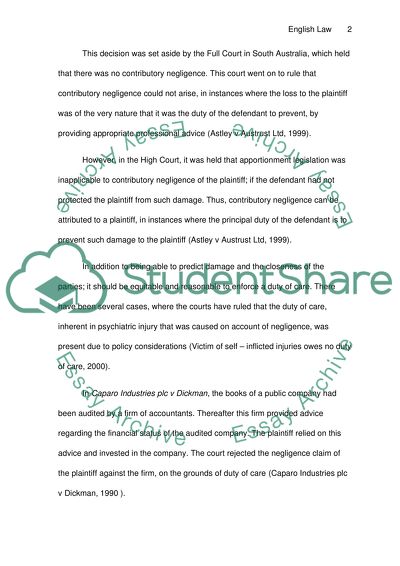Cite this document
(Negligence in English Law Essay Example | Topics and Well Written Essays - 1500 words, n.d.)
Negligence in English Law Essay Example | Topics and Well Written Essays - 1500 words. https://studentshare.org/law/1567020-the-english-law-on-defences-to-a-claim-in-negligence-is-a-confused-muddle-only-contributory-negligence-makes-any-coherent-sense-at-all
Negligence in English Law Essay Example | Topics and Well Written Essays - 1500 words. https://studentshare.org/law/1567020-the-english-law-on-defences-to-a-claim-in-negligence-is-a-confused-muddle-only-contributory-negligence-makes-any-coherent-sense-at-all
(Negligence in English Law Essay Example | Topics and Well Written Essays - 1500 Words)
Negligence in English Law Essay Example | Topics and Well Written Essays - 1500 Words. https://studentshare.org/law/1567020-the-english-law-on-defences-to-a-claim-in-negligence-is-a-confused-muddle-only-contributory-negligence-makes-any-coherent-sense-at-all.
Negligence in English Law Essay Example | Topics and Well Written Essays - 1500 Words. https://studentshare.org/law/1567020-the-english-law-on-defences-to-a-claim-in-negligence-is-a-confused-muddle-only-contributory-negligence-makes-any-coherent-sense-at-all.
“Negligence in English Law Essay Example | Topics and Well Written Essays - 1500 Words”. https://studentshare.org/law/1567020-the-english-law-on-defences-to-a-claim-in-negligence-is-a-confused-muddle-only-contributory-negligence-makes-any-coherent-sense-at-all.


